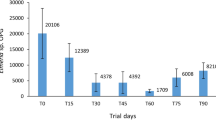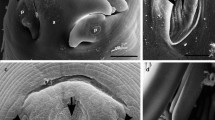Abstract
IN 1888–92, Grassi and Rovelli1 fed onchospheres of Davainea proglottina to the slugs Limax cinereus, Agriolimax agrestis and Limax flavus and were able in less than twenty days to obtain cysticercoids which when fed to hens developed into D. proglottina. In spite of these experiments, the authors did not exclude the possibility of direct infection, since they considered that these intermediate hosts were not present in sufficient numbers to account for the very heavy infection of the poultry in Rovellasca where they worked. Railliet and Lucet2 attempted to establish direct infection and failed, but they considered that other slugs, in addition to those used by Grassi and Rovelli, could serve as intermediate hosts.
This is a preview of subscription content, access via your institution
Access options
Subscribe to this journal
Receive 51 print issues and online access
$199.00 per year
only $3.90 per issue
Buy this article
- Purchase on Springer Link
- Instant access to full article PDF
Prices may be subject to local taxes which are calculated during checkout
Similar content being viewed by others
References
Z. Bakter. I. Orig., 3, 1888 and 5; 1889; Atti Acc. Catania, 4; 1892.
Bull. Soc. Zool. France; 1892.
Parasitology, 8; 1916.
Bull. biol. France et Belg., Suppl. 2; 1920.
Vet. J.; 1928.
Trans. Amer. Micro. Soc., 42; 1923.
J. Parasitol., 15; 1929.
Arch. Tierheilkunde, 65, Heft 6; 1932.
Author information
Authors and Affiliations
Rights and permissions
About this article
Cite this article
BROWN, F. Life-History of the Fowl Tapeworm, Davainea proglottina. Nature 131, 276–277 (1933). https://doi.org/10.1038/131276a0
Issue Date:
DOI: https://doi.org/10.1038/131276a0
Comments
By submitting a comment you agree to abide by our Terms and Community Guidelines. If you find something abusive or that does not comply with our terms or guidelines please flag it as inappropriate.



